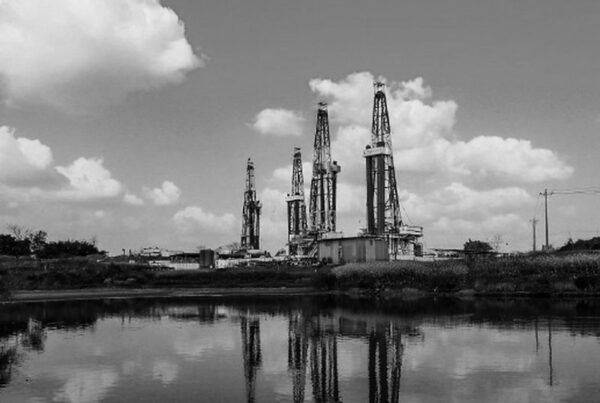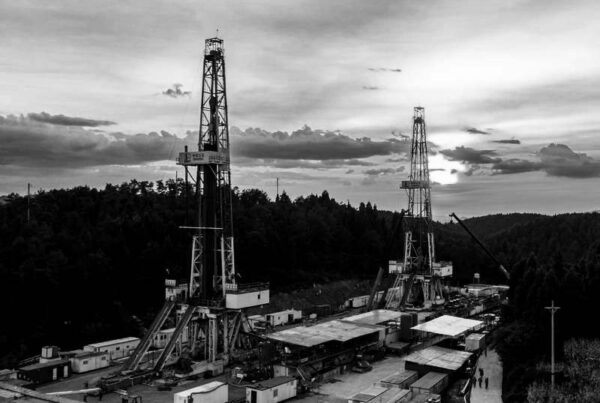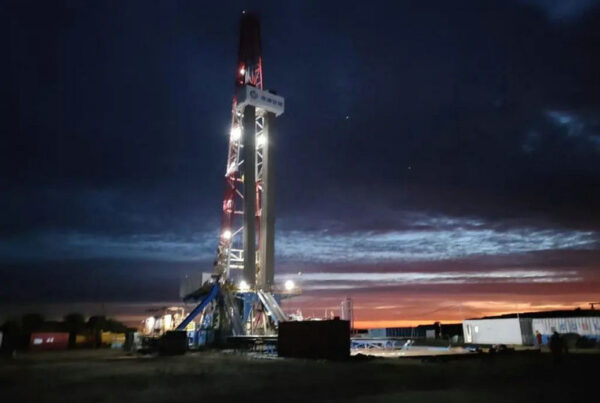China Shale News Review – April. 9 , 2025
◊ Tuhua Oilfield Advances Ultra-Heavy Oil Project
On March 20, the successful completion of the Yudong 204–1071 well marked the first drilling of Tuhua Oilfield’s key “ballast project” for deep ultra-heavy oil, a major step toward the field’s cumulative 10-million-ton production goal. Discovered in 1996, the Lukqin reservoir features depths over 5,200 meters and extremely viscous crude, making extraction a global challenge. Through continuous innovation in cold production and enhanced recovery techniques, the field produced 3.29 million tons during the 13th Five-Year Plan. The project aims to reach 500,000 tons annually by 2028, contributing to China’s energy security.
◊ China Confirms First 100-Million-Ton Shale Oilfield
On March 22, Sinopec’s Shengli Oilfield announced that the Jiyang Shale Oil New Xing Oilfield has officially passed reserve evaluation by China’s Ministry of Natural Resources, marking the confirmation of the country’s first 100-million-ton-class shale oilfield. Located in Gaoqing County, Zibo City, Shandong Province, the Fanye-Ping 1 block holds over 140 million tons of proven geological shale oil reserves, with technically recoverable reserves of 11.36 million tons. This is the first shale oil reserve certified under China’s newly issued shale petroleum reserve estimation standards from January 2025.
◊ China Discovers Billion-Ton Oilfield in Eastern South China Sea
On March 31, China National Offshore Oil Corporation (CNOOC) announced the discovery of the Huizhou 19-6 oilfield in the eastern South China Sea, marking China’s first large-scale offshore deep to ultra-deep clastic oilfield find. Located in the Huizhou Sag of the Pearl River Mouth Basin, about 170 km from Shenzhen, the field lies in 100-meter-deep waters. Test results show daily output of 413 barrels of crude oil and 68,000 cubic meters of natural gas. Proven geological reserves exceed 100 million tons of oil equivalent, highlighting the deep-sea exploration potential of China’s offshore basins.
◊ Sichuan Gas Field Surpasses 2 Billion Cubic Meters Output Mark
Since full-scale production began in 2024, the Sichuan Western Gas Field has produced over 2 billion cubic meters of natural gas and more than 120,000 tons of sulfur, contributing to China’s green energy goals for the 14th and 15th Five-Year Plans. Facing challenges like new staff, wells, facilities, and technologies, the field has developed an integrated “extraction-purification-transport” model. With refined production, lean well management, and stringent safety systems, it optimized operations and reduced emissions. It also advanced sales strategies to ensure production-consumption balance, aiming to further enhance integrated development and boost overall productivity.
◊ China Leads Global Shift to Deep Coalbed Methane Development
China has pioneered commercial development of deep coalbed methane (CBM), overcoming global barriers that limited production to shallow reserves. With over 500 billion cubic meters of proven deep CBM reserves and an annual capacity exceeding 2.5 billion cubic meters, China’s breakthrough has sparked global attention. Experts now see deep CBM—also known as coal-derived gas—as a future trillion-cubic-meter industry, potentially surpassing shale gas. This marks a paradigm shift in geoscientific research and exploration models. With advancements in gasification, well fracturing, and integrated management, China is positioned to lead a global revolution in coal-derived gas development.
(Source: Energy China Forum)




